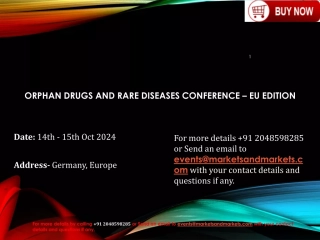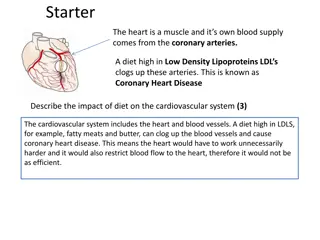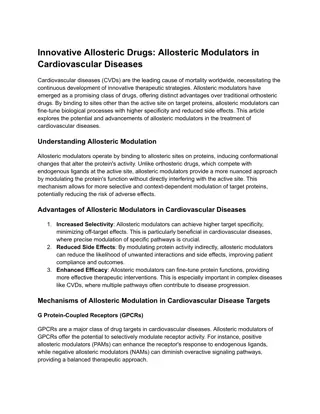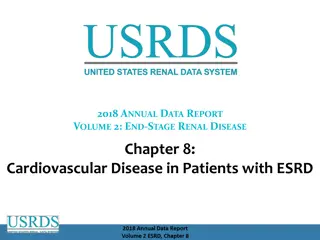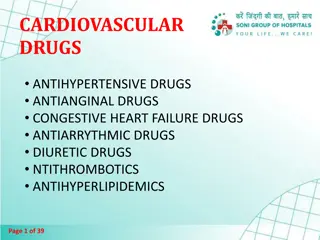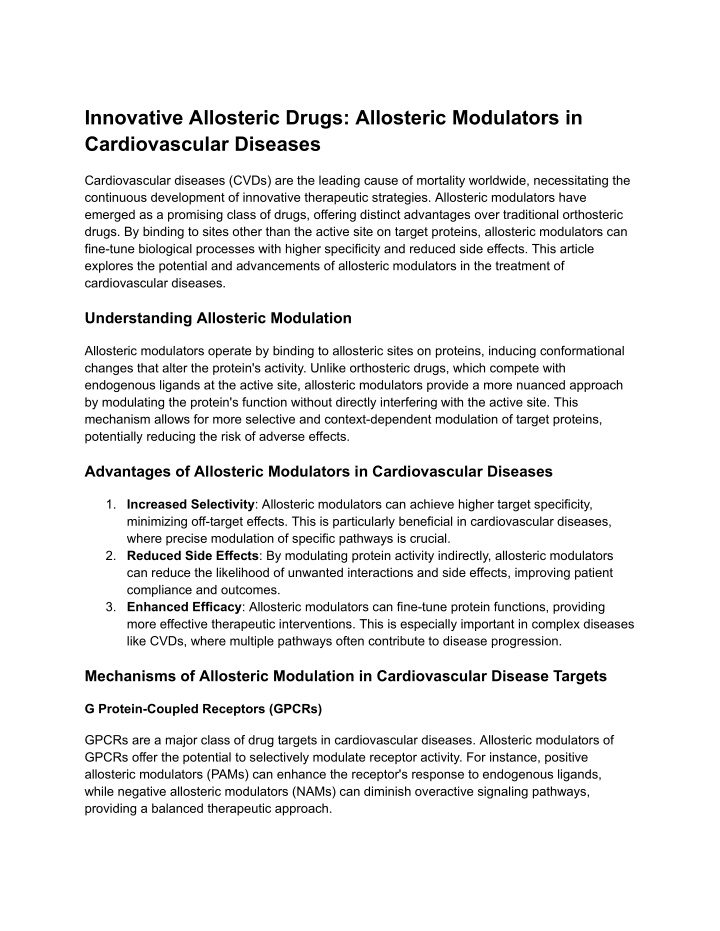
Innovative Allosteric Drugs_ Allosteric Modulators in Cardiovascular Diseases
Cardiovascular diseases (CVDs) are the leading cause of mortality worldwide, necessitating the continuous development of innovative therapeutic strategies. Allosteric modulators have emerged as a promising class of drugs, offering distinct advantages
Download Presentation

Please find below an Image/Link to download the presentation.
The content on the website is provided AS IS for your information and personal use only. It may not be sold, licensed, or shared on other websites without obtaining consent from the author. If you encounter any issues during the download, it is possible that the publisher has removed the file from their server.
You are allowed to download the files provided on this website for personal or commercial use, subject to the condition that they are used lawfully. All files are the property of their respective owners.
The content on the website is provided AS IS for your information and personal use only. It may not be sold, licensed, or shared on other websites without obtaining consent from the author.
E N D
Presentation Transcript
Innovative Allosteric Drugs: Allosteric Modulators in Cardiovascular Diseases Cardiovascular diseases (CVDs) are the leading cause of mortality worldwide, necessitating the continuous development of innovative therapeutic strategies. Allosteric modulators have emerged as a promising class of drugs, offering distinct advantages over traditional orthosteric drugs. By binding to sites other than the active site on target proteins, allosteric modulators can fine-tune biological processes with higher specificity and reduced side effects. This article explores the potential and advancements of allosteric modulators in the treatment of cardiovascular diseases. Understanding Allosteric Modulation Allosteric modulators operate by binding to allosteric sites on proteins, inducing conformational changes that alter the protein's activity. Unlike orthosteric drugs, which compete with endogenous ligands at the active site, allosteric modulators provide a more nuanced approach by modulating the protein's function without directly interfering with the active site. This mechanism allows for more selective and context-dependent modulation of target proteins, potentially reducing the risk of adverse effects. Advantages of Allosteric Modulators in Cardiovascular Diseases 1. Increased Selectivity: Allosteric modulators can achieve higher target specificity, minimizing off-target effects. This is particularly beneficial in cardiovascular diseases, where precise modulation of specific pathways is crucial. 2. Reduced Side Effects: By modulating protein activity indirectly, allosteric modulators can reduce the likelihood of unwanted interactions and side effects, improving patient compliance and outcomes. 3. Enhanced Efficacy: Allosteric modulators can fine-tune protein functions, providing more effective therapeutic interventions. This is especially important in complex diseases like CVDs, where multiple pathways often contribute to disease progression. Mechanisms of Allosteric Modulation in Cardiovascular Disease Targets G Protein-Coupled Receptors (GPCRs) GPCRs are a major class of drug targets in cardiovascular diseases. Allosteric modulators of GPCRs offer the potential to selectively modulate receptor activity. For instance, positive allosteric modulators (PAMs) can enhance the receptor's response to endogenous ligands, while negative allosteric modulators (NAMs) can diminish overactive signaling pathways, providing a balanced therapeutic approach.
Ion Channels Ion channels play critical roles in cardiac function, including regulating heart rate and contractility. Allosteric modulators targeting ion channels can adjust their activity to correct dysregulated cardiac functions. For example, allosteric modulators of potassium channels can help manage arrhythmias by stabilizing the electrical activity of the heart. Enzymes Certain enzymes involved in lipid metabolism and inflammation are key targets in cardiovascular diseases. Allosteric modulators can selectively regulate these enzymes, offering novel ways to control cholesterol levels, reduce inflammation, and prevent atherosclerosis. Current Developments and Clinical Applications Allosteric Modulators in Hypertension Hypertension, a major risk factor for CVDs, can be effectively managed with allosteric modulators targeting the renin-angiotensin-aldosterone system (RAAS). For example, novel allosteric modulators of the angiotensin II type 1 receptor (AT1R) have shown promise in preclinical studies by providing more precise control over blood pressure without the side effects commonly associated with traditional RAAS inhibitors. Allosteric Modulators in Heart Failure Heart failure involves complex pathophysiological processes, including neurohormonal dysregulation and myocardial remodeling. Allosteric modulators of -adrenergic receptors ( -ARs) offer a refined approach to managing heart failure. By selectively modulating -AR activity, these drugs can improve cardiac output and reduce adverse cardiac remodeling, offering a new hope for heart failure patients. Allosteric Modulators in Atherosclerosis Atherosclerosis, characterized by the buildup of plaques in arterial walls, is a leading cause of heart attacks and strokes. Allosteric modulators targeting enzymes involved in cholesterol metabolism, such as proprotein convertase subtilisin/kexin type 9 (PCSK9), have demonstrated efficacy in lowering LDL cholesterol levels and reducing atherosclerotic plaque formation. Challenges and Future Directions Drug Development and Optimization Developing allosteric modulators involves complex challenges, including identifying suitable allosteric sites, understanding the conformational dynamics of target proteins, and optimizing drug-like properties. Advanced computational tools and high-throughput screening techniques
are crucial for overcoming these challenges and accelerating the discovery of effective allosteric modulators. Clinical Translation While preclinical studies of allosteric modulators in cardiovascular diseases are promising, translating these findings into clinical success requires rigorous testing in clinical trials. Ensuring the safety, efficacy, and pharmacokinetic properties of allosteric modulators in diverse patient populations is essential for their successful clinical adoption. Personalized Medicine The future of cardiovascular therapeutics lies in personalized medicine, where treatments are tailored to individual patient profiles. Allosteric modulators, with their high selectivity and context-dependent modulation, are well-suited for personalized treatment strategies. Advances in genomics and biomarker discovery will further enable the identification of patients who are most likely to benefit from allosteric modulators, enhancing therapeutic outcomes. Conclusion Innovative allosteric drugs represent a promising frontier in the treatment of cardiovascular diseases. By offering increased selectivity, reduced side effects, and enhanced efficacy, allosteric modulators have the potential to revolutionize cardiovascular therapeutics. Ongoing research and clinical development will be critical in unlocking the full potential of these novel drugs, paving the way for more effective and personalized treatments for cardiovascular diseases. As we continue to explore and harness the power of allosteric modulation, the future of cardiovascular medicine looks brighter than ever.


